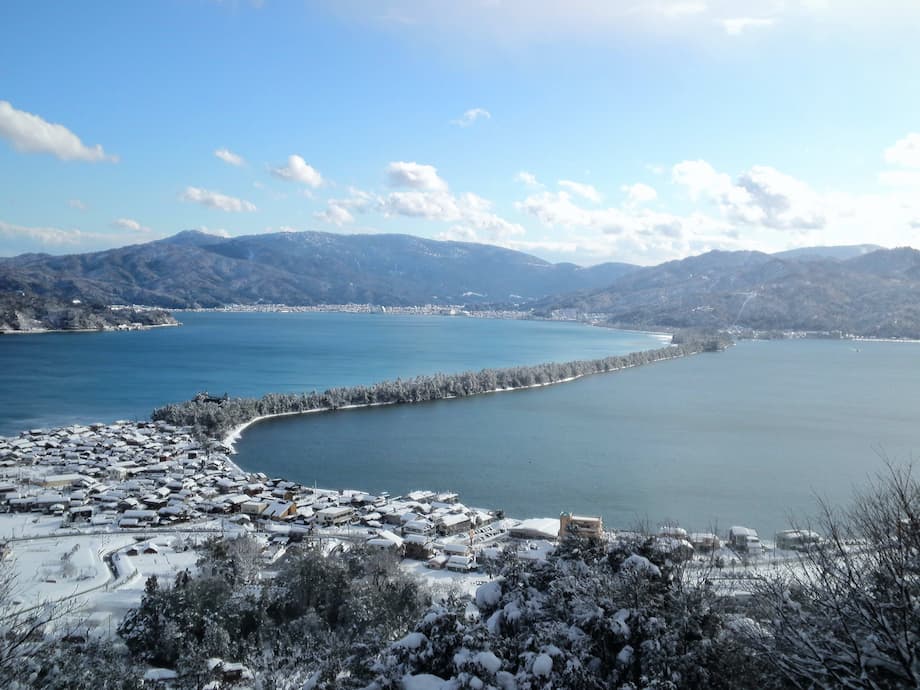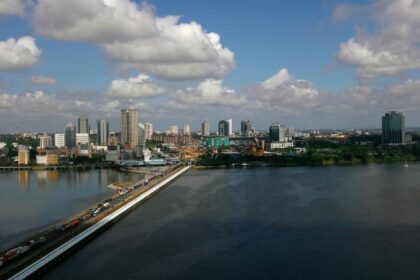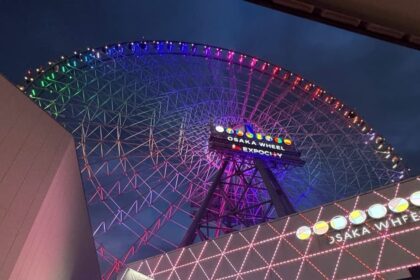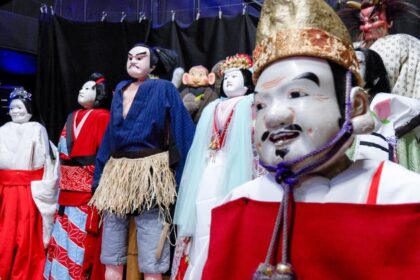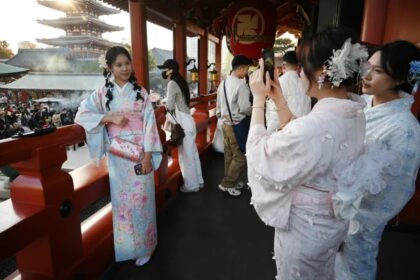Discovering Amanohashidate: Japan’s Celestial Sandbar
Amanohashidate, meaning “Bridge to Heaven,” is a breathtaking natural sandbar stretching 3.6 kilometers across Miyazu Bay in northern Kyoto Prefecture. Revered as one of Japan’s Three Most Scenic Views (Nihon Sankei), Amanohashidate has captivated travelers, poets, and artists for centuries with its ethereal beauty. The sandbar, blanketed with over 8,000 pine trees and flanked by soft white sands, forms a tranquil lagoon known as the Asoumi Sea. Unlike other sandbars, Amanohashidate does not face the open ocean directly but was shaped by centuries of sediment from Wakasa Bay meeting the Noda River’s currents, creating a unique and serene landscape.
- Discovering Amanohashidate: Japan’s Celestial Sandbar
- Why Amanohashidate Is a Must-Visit Destination
- Exploring Amanohashidate: Top Attractions and Experiences
- Beyond the Sandbar: Day Trips and Regional Highlights
- Planning Your Visit: Practical Tips and Seasonal Highlights
- Preserving Culture and Nature: Amanohashidate’s Enduring Legacy
- In Summary
This natural wonder is more than a scenic marvel—it is a living tapestry of Japanese mythology, culture, and craftsmanship, offering visitors a rare blend of spiritual heritage, artisanal tradition, and immersive travel experiences.
Why Amanohashidate Is a Must-Visit Destination
For generations, Amanohashidate has been celebrated in Japanese literature, art, and folklore. The sandbar is often depicted as a pathway between heaven and earth, a legend rooted in Shinto mythology. According to local lore, the deity Izanagi-no-mikoto created Amanohashidate as a celestial ladder to visit his beloved Izanami-no-mikoto. When the ladder fell, it became the sandbar we see today—a story that infuses the landscape with spiritual significance.
Its status as a national treasure was cemented in the 17th century when Confucian scholar Hayashi Gaho named it one of the Three Views of Japan, alongside Matsushima in Miyagi and Itsukushima Shrine on Miyajima Island, Hiroshima. Today, Amanohashidate is protected as part of the Tango-Amanohashidate-Oeyama Quasi-National Park and is recognized as an Important Cultural Landscape.
What Makes the View So Special?
The sandbar’s true magic is revealed from the observation decks perched on the mountains at either end of Miyazu Bay. From these vantage points, Amanohashidate appears to float between sky and sea. A beloved tradition called matanozoki invites visitors to view the sandbar upside down through their legs, making it resemble a dragon soaring into the clouds—a whimsical ritual that has become a rite of passage for travelers.
Each season transforms the landscape: cherry blossoms in spring, lush greenery in summer, fiery foliage in autumn, and a peaceful, snow-dusted quiet in winter. The sandbar’s beauty is timeless, drawing visitors year-round.
Exploring Amanohashidate: Top Attractions and Experiences
Whether you’re a culture enthusiast, nature lover, or adventure seeker, Amanohashidate offers a wealth of experiences. Here’s how to make the most of your visit:
Walking and Cycling the Sandbar
The sandbar’s flat, shaded path makes it ideal for walking or cycling. The full 3.6-kilometer journey takes about 40–50 minutes on foot, but rental bicycles are widely available for a leisurely ride. Benches and rest areas dot the route, inviting you to pause and soak in the scenery. Vehicles are not permitted, preserving the tranquility and natural beauty of the area.
Observation Decks: Panoramic Vistas
For the iconic “bridge to heaven” view, head to one of the observation decks:
- Amanohashidate View Land: Located atop Mount Monju, this amusement park and observatory is accessible by chairlift or monorail. It offers family-friendly attractions and the famous “flying dragon” perspective.
- Kasamatsu Park: On the Ogaki side, accessible by cable car or lift, this park is the birthplace of the matanozoki tradition and offers kawarake (clay disc) throwing for good luck.
- Bentenyama Observation Deck: Near Nariaiji Temple, this spot provides a quieter, alternative view.
- Mount Takigami Observation Deck: Near Miyazu City, this deck is renowned for cherry blossoms and autumn foliage.
Each viewpoint offers a unique angle on the sandbar and the surrounding bay, making them essential stops for photographers and sightseers alike.
Temples, Shrines, and Spiritual Sites
Amanohashidate is steeped in spiritual heritage. Notable sites include:
- Chionji Temple: One of Japan’s three temples dedicated to the Monju Bodhisattva, the Buddhist deity of wisdom. The temple features a striking Tahoto Pagoda and a statue of Dainichi Nyorai. Visitors can purchase fan-shaped fortunes and tie them to pine branches for academic blessings.
- Amanohashidate Shrine: Believed to predate the 1300s, this shrine is dedicated to Izanagi-no-mikoto and features a natural freshwater spring, Isoshimizu, celebrated as one of Japan’s 100 Famous Waters.
- Motoise Kono Shrine: At the northern end, this ancient shrine once enshrined the sun goddess Amaterasu and is a key site in local mythology.
- Manai Shrine: Considered a “power spot,” this inner shrine is revered for its sacred spring water and spiritual energy.
These sites are not only places of worship but also living museums of Japanese religious art and architecture.
Boat Cruises and Ferries
To appreciate Amanohashidate from the water, take a sightseeing cruise or ferry across the lagoon. Cruises connect Amanohashidate Pier and Ichinomiya Pier, offering panoramic views and the chance to observe seabirds (though feeding them is discouraged for ecological reasons). Boat rides provide a fresh perspective on the sandbar’s scale and beauty.
Local Cuisine and Culinary Traditions
The region’s culinary heritage is as rich as its scenery. Amanohashidate and the surrounding Tango Peninsula are famed for:
- Fresh seafood: Local specialties include asari-don (clam rice bowl), grilled ayu (sweetfish), and seasonal catches like iwagaki (rock oysters) and winter yellowtail.
- Chikuwa: A beloved baked fishcake, often enjoyed as a snack along the sandbar.
- Chie no Mochi: A traditional rice cake, delighting locals and visitors for generations.
- Matcha and wagashi: Enjoy traditional Japanese sweets and green tea at teahouses like Hashidate Chaya, nestled on the sandbar.
Nearby Ine village is renowned for its seafood, with restaurants serving sashimi, kaisendon (seafood bowls), and local sake. The Mukai Sake Brewery, led by pioneering female brewer Kuniko Mukai, produces the acclaimed Ine Mankai, a red rice-based sake with a unique rosé-like flavor.
Beyond the Sandbar: Day Trips and Regional Highlights
Amanohashidate is the gateway to a region rich in culture, tradition, and natural beauty. Here are some top side trips and experiences:
Ine: The Venice of Japan
Just 15 kilometers north lies Ine, a picturesque fishing village famed for its funaya—traditional boathouses lining the bay. With roots in the Edo period, these two-story structures once served as both boat garages and living quarters. Today, many are converted into charming inns, cafés, or shops, offering visitors a glimpse into Japan’s maritime heritage.
Boat tours, available from the Ine Tourist Information Center, provide panoramic views of the funaya and insight into local life. Biking around the bay or visiting Funaya no Sato Park for an elevated perspective are also popular options. Ine’s seafood, especially its oysters and yellowtail, is a culinary highlight, and the village’s sake brewery is a must-visit for enthusiasts.
Kannabe Highlands: Outdoor Adventures
For those seeking adventure, the Kannabe Highlands in nearby Hyogo Prefecture offer year-round activities. In winter, the area transforms into a snowy wonderland ideal for skiing, snowboarding, and snowshoeing. Guided snowshoe treks up dormant volcanoes, complete with hot tea and chocolate fondue at the summit, provide unforgettable experiences. In warmer months, visitors can enjoy paragliding, fruit picking, and hiking, making Kannabe a versatile destination for nature lovers.
Textile Heritage and Traditional Crafts
The Tango Peninsula is a cradle of Japanese textile artistry. The region is renowned for Tango Chirimen, a silk crepe used in high-end kimonos, and fujifu, an ancient fabric woven from wisteria vines. Workshops in Miyazu and Yosano allow visitors to try their hand at wisteria weaving or indigo dyeing, connecting them with centuries-old traditions.
Artisans in Yosano still produce hand-dyed silk using local plants, a process that can take over 300 hours per kimono. Modern studios blend digital technology with traditional techniques, ensuring the survival and evolution of these crafts. The region’s commitment to sustainability and cultural preservation is evident in its designation as an SDGs Future City and its adherence to global tourism standards.
Planning Your Visit: Practical Tips and Seasonal Highlights
Amanohashidate is easily accessible from Kyoto and Osaka, making it an ideal day trip or overnight escape from the city crowds. The Limited Express Hashidate train from Kyoto Station takes just over two hours, and express buses are also available. Once there, the area is compact and walkable, with rental bicycles, ferries, and cable cars providing convenient transport.
Best Times to Visit
Each season offers a distinct experience:
- Spring: Cherry blossoms frame the sandbar and observation decks, creating a pastel panorama.
- Summer: The beaches come alive for swimming and sunbathing, and the pine groves offer cool shade.
- Autumn: Fiery foliage transforms the landscape, and seasonal foods like matsutake mushrooms and chestnuts are at their peak.
- Winter: The area is quieter, with occasional snowfall lending a magical atmosphere. Nearby ski resorts in Kannabe offer winter sports.
Autumn is particularly recommended for food lovers, as local markets and restaurants showcase the bounty of the harvest, from fatty Pacific saury to sweet chestnut treats.
Where to Stay
While Amanohashidate can be enjoyed as a day trip, staying overnight allows for a more relaxed experience. Options range from traditional ryokan inns to funaya guesthouses in Ine. Advance reservations are recommended, especially for unique waterfront accommodations, which are often booked months in advance.
Travel Trends: Escaping the Crowds
With overtourism affecting Japan’s major cities, destinations like Amanohashidate and Ine are gaining popularity among travelers seeking authentic, slower-paced experiences. Recent years have seen a surge in interest, with search trends reflecting a growing desire for regional exploration and cultural immersion. Amanohashidate’s blend of natural beauty, heritage, and hospitality makes it a standout alternative to the usual tourist hotspots.
Preserving Culture and Nature: Amanohashidate’s Enduring Legacy
Amanohashidate is more than a scenic spot—it is a living symbol of Japan’s harmonious relationship with nature, tradition, and community. Conservation efforts by local residents and authorities ensure that the sandbar’s white sands and green pines remain pristine for future generations. Sustainable tourism initiatives, such as promoting traditional crafts and eco-friendly travel, are central to the region’s identity.
Visitors are encouraged to respect the environment, support local artisans, and engage with the area’s rich cultural tapestry. Whether participating in a weaving workshop, savoring seasonal cuisine, or simply strolling beneath the pines, every experience at Amanohashidate is a step into Japan’s timeless spirit.
In Summary
- Amanohashidate is a 3.6-kilometer pine-covered sandbar in northern Kyoto, revered as one of Japan’s Three Most Scenic Views.
- The area blends natural beauty, spiritual heritage, and artisanal tradition, offering a wide range of attractions from observation decks to historic temples and shrines.
- Visitors can walk or cycle the sandbar, enjoy panoramic views, take boat cruises, and savor local seafood and sweets.
- Nearby Ine village, with its iconic funaya boathouses, and the Kannabe Highlands offer additional cultural and outdoor adventures.
- The region is a hub for traditional crafts like silk weaving and wisteria weaving, with workshops and sustainable tourism initiatives.
- Amanohashidate is easily accessible from Kyoto and Osaka, making it an ideal day trip or overnight destination, especially for those seeking authentic, crowd-free experiences.
- Seasonal highlights include cherry blossoms, autumn foliage, and winter sports, with local cuisine reflecting the bounty of each season.
- Conservation and community efforts ensure Amanohashidate’s enduring legacy as a bridge between Japan’s past and present.


